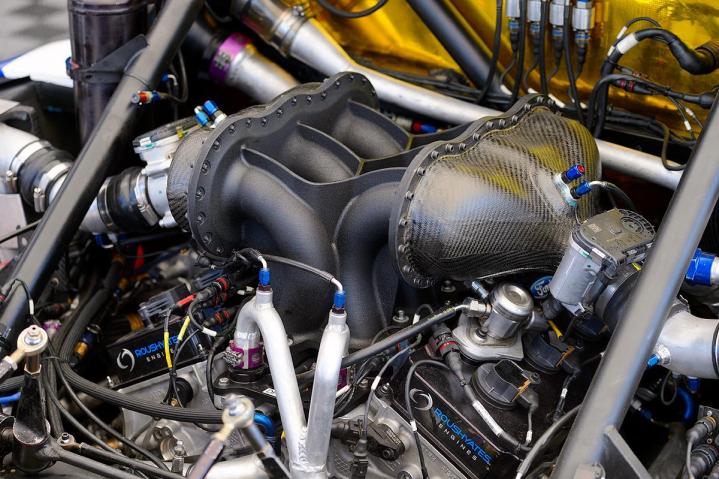
Ford apparently still thinks so. Over the past few months, it tested a new technology that’s been generating more than its share of buzz in one of the most demanding racing environments in existence.
The Blue Oval developed a 3D-printed intake manifold and other parts for the 3.5-liter EcoBoost V6 used in its Tudor United SportsCar Championship Daytona Prototype racers.
These cars – which use a version of the twin-turbocharged EcoBoost engine that reportedly influenced the new Ford GT’s motor – compete in endurance races that can last up to 24 hours. In this type of racing, durability and reliability are just as important as speed, if not more so.
In that respect, the Tudor series seems to make a pretty good testing ground for 3D printing, which has been demonstrated numerous times in automotive applications but hasn’t scaled up to mass production yet.
Local Motors 3D-printed entire car bodies at public shows. while Oak Ride National Laboratory recently printed its own Shelby Cobra replica out of carbon fiber-reinforced plastic.
Ford’s use of 3D printing is a little smaller in scale. The most significant 3D-printed part on the Daytona Prototype EcoBoost engines is an intake manifold, which Ford says weighs less than a part made using conventional methods, and boasts better airflow properties.
It’s also stood up pretty well to the challenges of endurance racing. A car equipped with the 3D-printed manifold won the Rolex 24 at Daytona back in January, while another placed fourth at the Tudor race in Detroit this past weekend.
Ford claims to have purchased the first 3D printer ever made, in 1988. It originally printed prototype buttons, switches, and knobs with the machine.
While the ability of 3D printers to churn out prototype parts relatively quickly is proving handy in some applications, there’s no telling if it will ever make it to mainstream use.
At least there’s now evidence that 3D-printed parts can stand up to some motorsports-level abuse.
Editors' Recommendations
- Nvidia turns simple text prompts into game-ready 3D models
- AMD is bringing 3D V-Cache back to Ryzen 7000 — but there’s a twist
- AMD’s revolutionary 3D V-Cache chip could launch very soon
- AMD’s 3D-stacked Ryzen 7 5800X3D is ‘world’s fastest gaming processor’
- NASA is testing a 3D printer that uses moon dust to print in space


